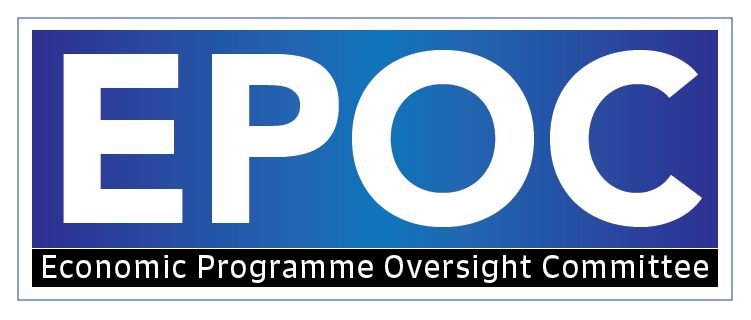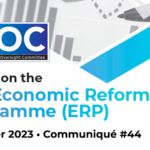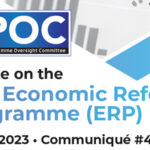A Concluding Statement describes the preliminary findings of IMF staff at the end of an official staff visit (or ‘mission’), in most cases to a member country. Missions are undertaken as part of regular (usually annual) consultations under Article IV of the IMF’s Articles of Agreement, in the context of a request to use IMF resources (borrow from the IMF), as part of discussions of staff monitored programs, or as part of other staff monitoring of economic developments.
The authorities have consented to the publication of this statement. The views expressed in this statement are those of the IMF staff and do not necessarily represent the views of the IMF’s Executive Board. Based on the preliminary findings of this mission, staff will prepare a report that, subject to management approval, will be presented to the IMF Executive Board for discussion and decision.
The economic reform program, that began in May 2013, has been a turning point for Jamaica . With broad-based social and political support for reforms, the Jamaican government—over two administrations—has embarked on a path of fiscal discipline, monetary and financial sector reforms, and wide-ranging structural improvements to break a decades-long cycle of high debt and low growth.
Considerable progress has been achieved on macroeconomic policies and outcomes. Fiscal discipline—anchored by the Fiscal Responsibility Law—has been essential to reduce public debt and secure macroeconomic stability. Employment is at historic highs, inflation and the current account deficit are modest, international reserves are at a comfortable level, and external borrowing costs are at historical lows.
Growth and social outcomes, however, have been discouraging. Economic growth continues to disappoint, averaging only 0.9 percent since the reforms began. Entrenched structural obstacles, including crime, bureaucratic processes, insufficient labor force skills, and poor access to finance, continue to hinder productivity and growth. Moreover, the agricultural sector’s vulnerability to weather shocks exacerbated rural poverty in 2015. Not addressing these bottlenecks could pose risks for continued public support for the government’s policy program.
Structurally reducing the wage bill is critical for the government to reprioritize spending toward growth-enhancing projects. More expenditure is needed for infrastructure, citizen security, building agricultural resilience, health, education, and the social safety net. Creating the space for such spending will require going beyond temporary remedies like wage freezes and adjustments to non-wage benefits. It will require high-quality measures to (i) overhaul the compensation structure to retain skills and reward performance, (ii) streamline the vast and inequitable allowances structure, (iii) prioritize key government functions and shed those activities that the government can no longer afford to undertake, and (iv) change the capital-labor mix through technology upgrades, including a better monitoring of (and accountability for) government spending. Inevitably, these reforms will also lead to a reduction in the size of the public workforce. Such a holistic approach will support a durable reduction in the wage bill, without frequent discordant wage negotiations, and enhance public service delivery with fewer but better paid public employees.
Improving social outcomes and fostering inclusive growth will require addressing structural bottlenecks and creating an enabling environment for the private sector. Countering both weak social outcomes and escalating crime will take time but will be essential for sustained growth. In this regard, the evidence suggests that early childhood education, interventions to improve school attendance, and skills training for the youth would foster a virtuous cycle of lower crime, higher wages, stronger growth, and increased economic opportunity, particularly for the young. Policies to support productive private investments, including improving lending to smaller businesses and reducing lending-deposit interest spreads, will help fuel such an upswing. However, the government must resist the pressure to use scarce public resources to “pick winners” (including through providing tax incentives). Instead, the goal should be a uniform, broad-based, and low rate tax system, a level playing field for business, and harmonized rules for all.
Formalizing the current inflation targeting regime will help entrench macroeconomic stability and promote growth. With inflation likely to remain in the lower part of the central bank’s target range, a looser monetary stance remains appropriate. Meanwhile, upcoming revisions to the Bank of Jamaica (BOJ) Act—including a clear mandate for price stability, a reformed governance structure, and a strong central bank balance sheet—will help institutionalize the inflation targeting framework. Also, continued development of the foreign exchange (FX) market, liquidity management and forecasting toolkit, along with upgrading the BOJ’s communication practices, will improve policy signaling and enhance credibility. Successful inflation targeting will require a clear commitment to a flexible and market-determined exchange rate with limited involvement of the central bank in the currency market. This implies that FX sales should be confined to disorderly market conditions, especially given the reductions in the surrender requirements, and buy auctions should aim to build reserves in a non-disruptive way.
Financial sector stability is a prerequisite for strong and sustained growth.Ongoing prudential and supervisory improvements will enhance systemic stability. While changes to investment limits for non-banks should be considered, they must be backed by a thorough assessment – including of appropriate regulations, risk management guidelines, and supervisory arrangements – to ensure that greater flexibility in non-banks’ asset-liability management practices does not jeopardize financial stability. Introduction of a Special Resolution Regime for financial institutions will strengthen the system’s safety net while putting clear requirements in place for the use of public resources.
Continued reform implementation will not only safeguard hard-won gains but also deliver stronger growth and job creation . After 5 years of reforms and tenacious fiscal consolidation, risks from reform fatigue and loss of social support are high, especially as growth remains feeble and crime escalates. Addressing some of the entrenched structural problems that hamper growth is not an overnight task; these difficult reforms require continued broad-based support and policymakers’ commitment to persevere with the implementation.
The authorities’ program, supported by the IMF’s Stand-By Arrangement (SBA), remains on track. All quantitative performance criteria and structural benchmarks for the review period ending December 2017 have been met. Non-borrowed international reserves well-exceeded the program target and tax revenues for FY2017/18 were above the budget’s target (reflecting the payoffs from revenue administration reforms put in place by the government over the past few years). The mission reached preliminary staff-level agreement with the authorities on a package of measures to complete the third review under the SBA. Consideration by the IMF’s Executive Board is tentatively scheduled for April 2018. Upon approval, an additional US$233 million would be made available to Jamaica, bringing the total accessible credit to about US$1.033 billion. The Jamaican authorities continue to view the SBA as precautionary, an insurance policy against unforeseen external economic shocks that are beyond Jamaica’s control.
The IMF team thanks the Jamaican authorities and other interlocutors for their hospitality and continued candid and constructive discussions.
IMF Communications Department
MEDIA RELATIONS
PRESS OFFICER: RANDA ELNAGAR
PHONE: +1 202 623-7100EMAIL: [email protected]
The above article was originally published on the IMF website. Click here to view the original document.







